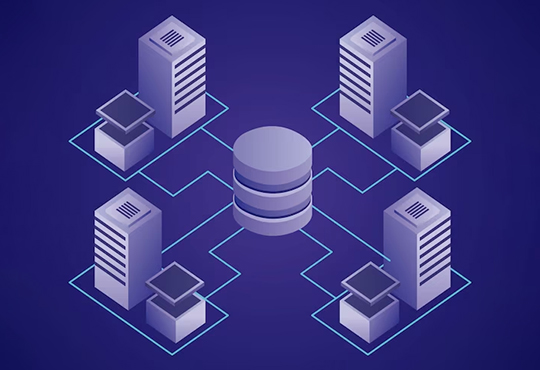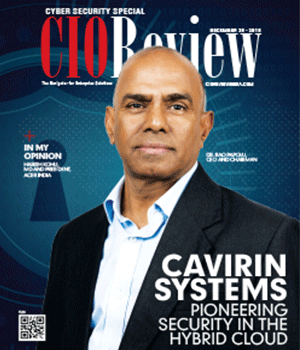
Integrating Secure File Gateway with Existing IT Infrastructure for Enhanced Functionality
Megha Jain, Content Writer | Friday, 01 December 2023, 14:02 IST
 In an era where digital data exchange is integral to business operations, the integration of a secure file gateway into existing IT infrastructure has become a strategic imperative for many organizations. A secure file gateway provides a robust platform for managing, securing, and monitoring file transfers. This article delves into how businesses can seamlessly integrate a secure file gateway into their existing IT systems, enhancing functionality and ensuring a more secure data transfer process.
In an era where digital data exchange is integral to business operations, the integration of a secure file gateway into existing IT infrastructure has become a strategic imperative for many organizations. A secure file gateway provides a robust platform for managing, securing, and monitoring file transfers. This article delves into how businesses can seamlessly integrate a secure file gateway into their existing IT systems, enhancing functionality and ensuring a more secure data transfer process.
Understanding the Role of a Secure File Gateway
Before diving into integration strategies, it's essential to understand what a secure file gateway is and its role in a business's IT landscape. A secure file gateway is a solution designed to facilitate secure file transfers into and out of an organization. It acts as a protective layer, ensuring that all data transfers occur in a secure, controlled, and efficient manner, safeguarding sensitive information from cyber threats and unauthorized access.
Assessing Current IT Infrastructure
The first step in integrating a secure file gateway is a thorough assessment of the existing IT infrastructure. This assessment should identify current file transfer methods, data storage solutions, network architecture, and security protocols. Understanding the existing setup helps in determining the best approach to integrate the secure file gateway without disrupting ongoing operations.
Choosing the Right Secure File Gateway Solution
Selecting a secure file gateway that aligns with the organization's specific needs is crucial. The chosen solution should be compatible with existing systems and scalable to accommodate future growth. It should also support various protocols and standards, ensuring that it can interact seamlessly with different systems and platforms within the IT infrastructure.
Planning for Integration
Once the appropriate secure file gateway is selected, the next step is planning the integration. This involves mapping out how the gateway will fit into the existing network and data workflows. Key considerations include network configuration, user access management, and how the gateway will handle different file types and sizes. A well-planned integration strategy minimizes downtime and ensures a smooth transition.
Ensuring Security and Compliance
One of the primary reasons for integrating a secure file gateway is to enhance data security and compliance. During the integration process, it's vital to ensure that the gateway's security features are properly configured. This includes setting up encryption for data in transit and at rest, configuring secure protocols like SFTP or FTPS, and implementing access controls and authentication measures.
Testing and Deployment
Before full-scale deployment, conducting a comprehensive testing phase is essential. This phase should test the secure file gateway's functionality, compatibility with existing systems, and its security features. Once testing confirms that the integration meets all requirements, the gateway can be deployed across the organization.
Training and Monitoring
After deployment, training staff on how to use the new system is crucial. Proper training ensures that employees can leverage the secure file gateway effectively and understand the security protocols involved. Additionally, ongoing monitoring of the gateway is essential to ensure it operates as intended and to quickly address any issues that may arise.
Conclusion
Integrating a secure file gateway into an existing IT infrastructure is a significant step towards enhancing an organization's data transfer capabilities and security posture. By carefully assessing the current IT setup, choosing the right solution, planning strategically, and ensuring security and compliance, businesses can successfully integrate a secure file gateway. This integration not only secures sensitive data but also streamlines operations, ensuring that the organization remains agile and resilient in the face of evolving digital challenges.
CIO Viewpoint
The Cyber Security Spar in Integrating IT and...
By Vimal Goel, CIO, HPCL-Mittal Energy
Towards Cyber Resilience: A Data-Centric...
By Puneet Gupta, Vice President & Managing Director, NetApp India/SAARC
Why DDoS Attacks Are on the Rise and How Can...
By Shibu Paul, Vice President – International Sales at Array Networks
CXO Insights
Tailored QR Code Templates for Phishing Scams
By Sundar Balasubramanian, India and SAARC MD, Check Point Software Technologies
Emerging Trends, Challenges & Future Prospects...
By Sujoy Brahmachari, CIO & CISO, Rosmerta Technologies
Exploring Data-First Security and Automation in...




.jpg)
.jpg)
.jpg)








